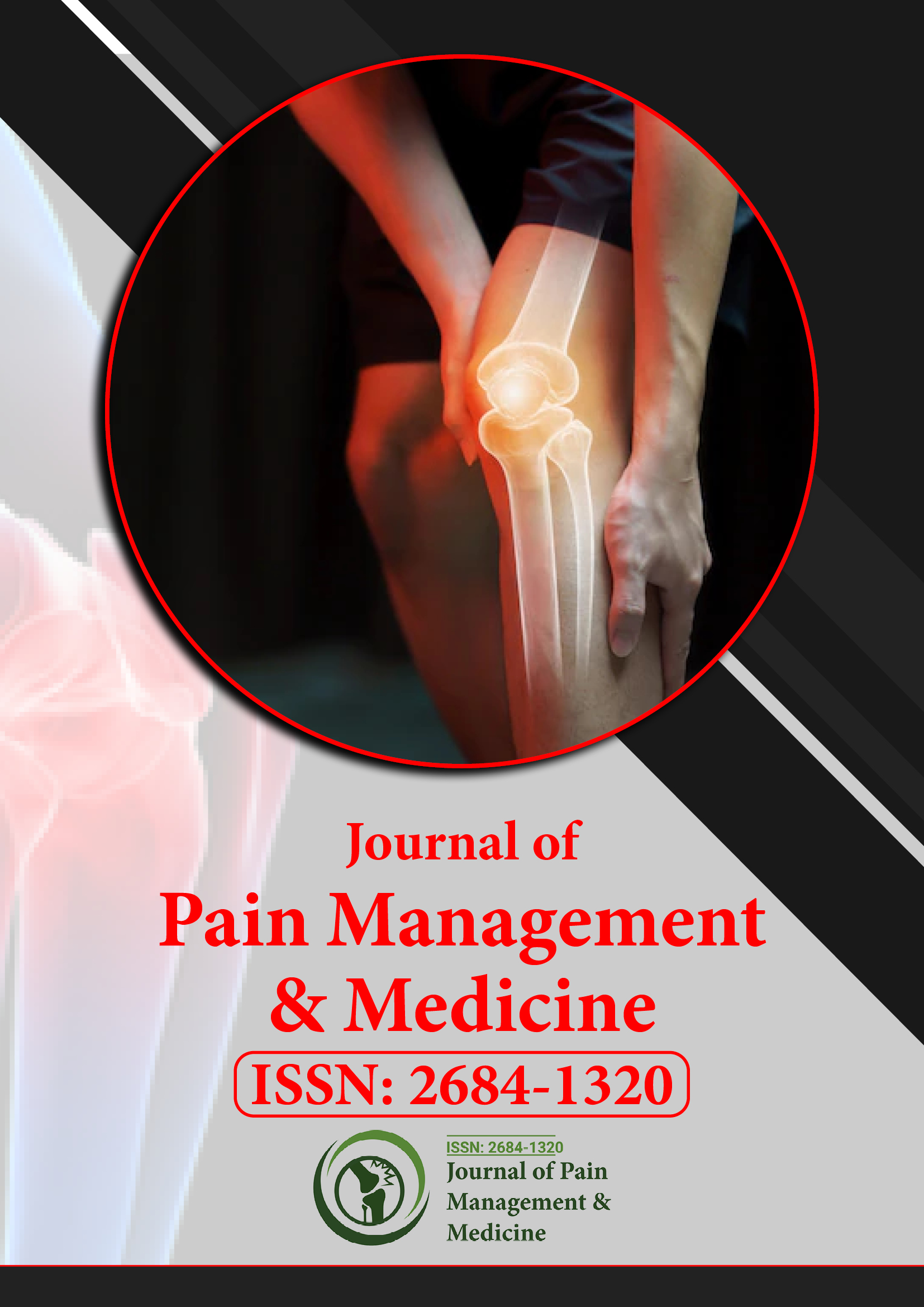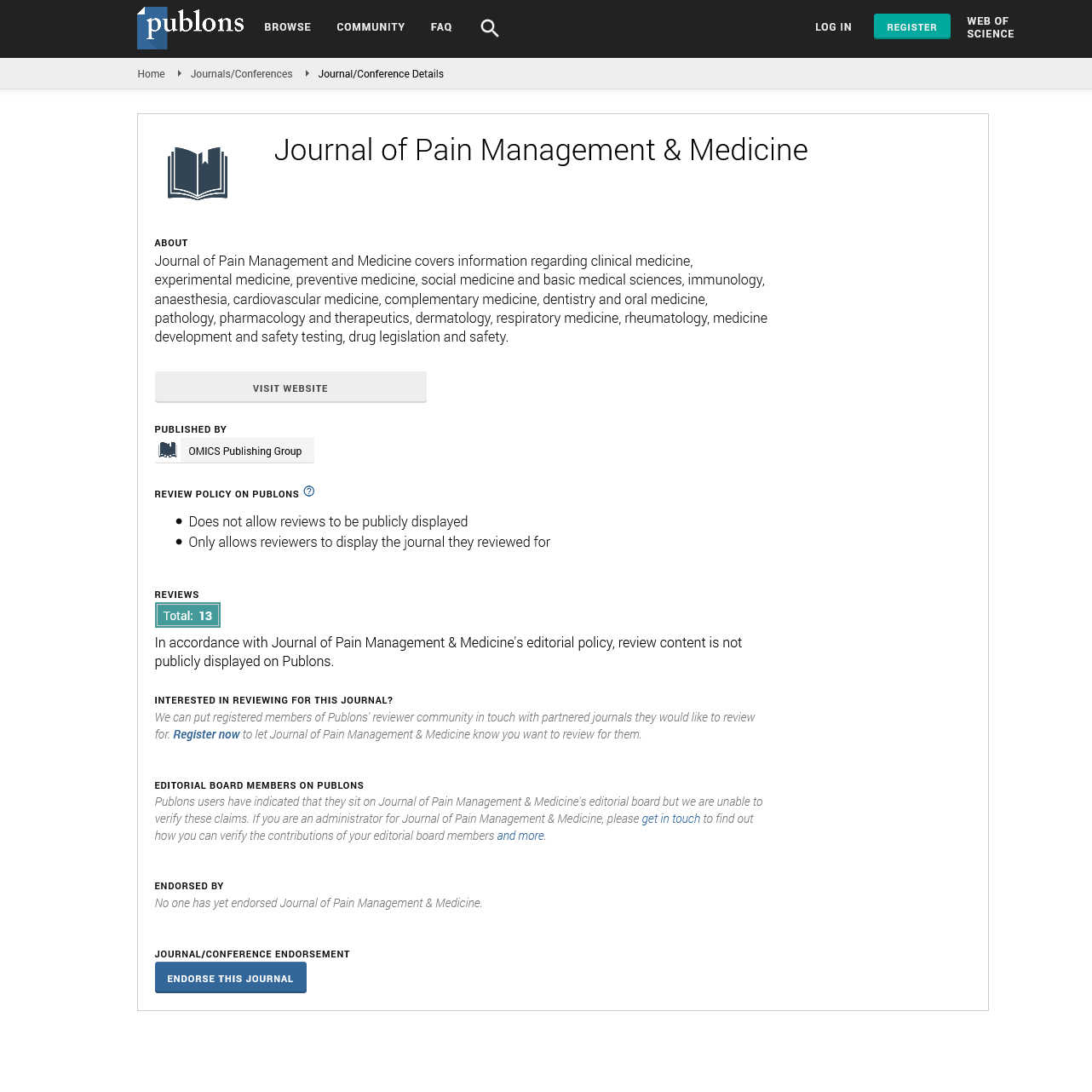Indexed In
- RefSeek
- Hamdard University
- EBSCO A-Z
- Publons
- Euro Pub
- Google Scholar
- Quality Open Access Market
Useful Links
Share This Page
Journal Flyer

Open Access Journals
- Agri and Aquaculture
- Biochemistry
- Bioinformatics & Systems Biology
- Business & Management
- Chemistry
- Clinical Sciences
- Engineering
- Food & Nutrition
- General Science
- Genetics & Molecular Biology
- Immunology & Microbiology
- Medical Sciences
- Neuroscience & Psychology
- Nursing & Health Care
- Pharmaceutical Sciences
Perspective - (2024) Volume 10, Issue 3
Exploring the Effective Techniques for Pain Management
Nickolai Alison*Received: 26-Apr-2024, Manuscript No. JPMME-24-26069; Editor assigned: 29-Apr-2024, Pre QC No. JPMME-24-26069 (PQ); Reviewed: 14-May-2024, QC No. JPMME-24-26069; Revised: 21-May-2024, Manuscript No. JPMME-24-26069 (R); Published: 29-May-2024, DOI: 10.35248/2684-1320.24.10.266
Description
Pain is an inevitable aspect of the human experience, functioning as an alert indicator that a condition exists incorrectly inside the body. While acute pain typically subsides with healing, chronic pain can persist for weeks, months, or even years, significantly impacting an individual's quality of life. Due its pervasiveness, effective pain management solutions are essential for reducing pain while improving mental health. Before delving into pain management strategies, it is essential to recognize the underlying mechanisms of pain perception. Pain is a complex phenomenon involving complicated interactions between sensory nerves, neurotransmitters, and the central nervous system. The International Association for the Study of Pain (IASP) defines pain as a difficult sensory and emotional experience associated with actual or potential tissue damage.
Types of pain
Pain can emerge in different forms, classified based on its duration and etiology. Acute pain typically arises suddenly in response to tissue injury or trauma and serves a protective function. Chronic pain persists beyond the expected healing time and may result from conditions such as arthritis, neuropathy, or fibromyalgia. Additionally, pain can be nociceptive, neuropathic, or psychogenic, each requiring specific management approaches.
Conventional pharmacological interventions
Pharmacotherapy remains the foundation of pain management, with various medications targeting different pain pathways. Nonsteroidal Anti-Inflammatory Drugs (NSAIDs) alleviate pain and inflammation by inhibiting prostaglandin synthesis, making them effective for musculoskeletal pain and inflammatory conditions. Opioids, while potent analgesics, are reserved for severe pain due to their potential for addiction and adverse effects. Adjuvant medications such as antidepressants and anticonvulsants are also utilized to modulate neuropathic pain.
Non-pharmacological approaches
In addition to drugs, non-pharmacological interventions play an important role in pain management, providing holistic alternatives or adjuncts to conventional treatments. Physical therapy aims to enhance mobility, strength, and function while reducing pain through optimized exercises and manual techniques. Occupational therapy assists individuals in maintaining significant activities with pain-related limitations. Moreover, Cognitive-Behavioral Therapy (CBT) addresses detrimental thought patterns and managing mechanisms, empowering patients to manage pain-related distress.
Integrative medicine and complementary therapies
In recent years, there have been increased integrative techniques that combine conventional medicine with Complementary and Alternative Therapies (CAM). Techniques such as acupuncture, massage therapy, and chiropractic care have obtained recognition for their efficacy in alleviating pain and improving relaxation. Furthermore, mindfulness-based practices, including meditation and yoga, provide psychological benefits by establishing recognition and reducing stress, which can amplify pain perception.
Pain management in special populations
Certain demographics, such as pediatric or geriatric patients, provide different difficulties in pain management. Pediatric pain management necessitates individualized methods considering developmental factors and psychological aspects. Polypharmacy, comorbidities, and age-related physiological changes of all factors to consider when treating adults in order to reduce side effects and improve pain alleviation.
Ethical considerations and pain
Ethical difficulties provide development in pain management, particularly in opioid prescribing practices, end-of-life care, and cultural considerations. The opioid epidemic has developed severe controls to prevent use and transfer while providing access for actual pain patients. Palliative care and hospice services prioritize symptom management and quality of life for individuals with advanced illness, highlighting the importance of compassionate end-of-life care.
Emerging developments and future directions
Advancements in pain investigation continue to create innovative therapies and personalized methods. Targeted drug delivery systems, such as transdermal patches and implantable devices, provide sustained pain relief with fewer systemic side effects. Additionally, genetic profiling may facilitate the identification of individuals developed to opioid dependence or poor treatment response, guiding personalized pain management strategies.
Citation: Alison N (2024) Exploring the Effective Techniques for Pain Management. J Pain Manage Med. 10:266.
Copyright: © 2024 Alison N. This is an open access article distributed under the terms of the Creative Commons Attribution License, which permits unrestricted use, distribution, and reproduction in any medium, provided the original author and source are credited.

